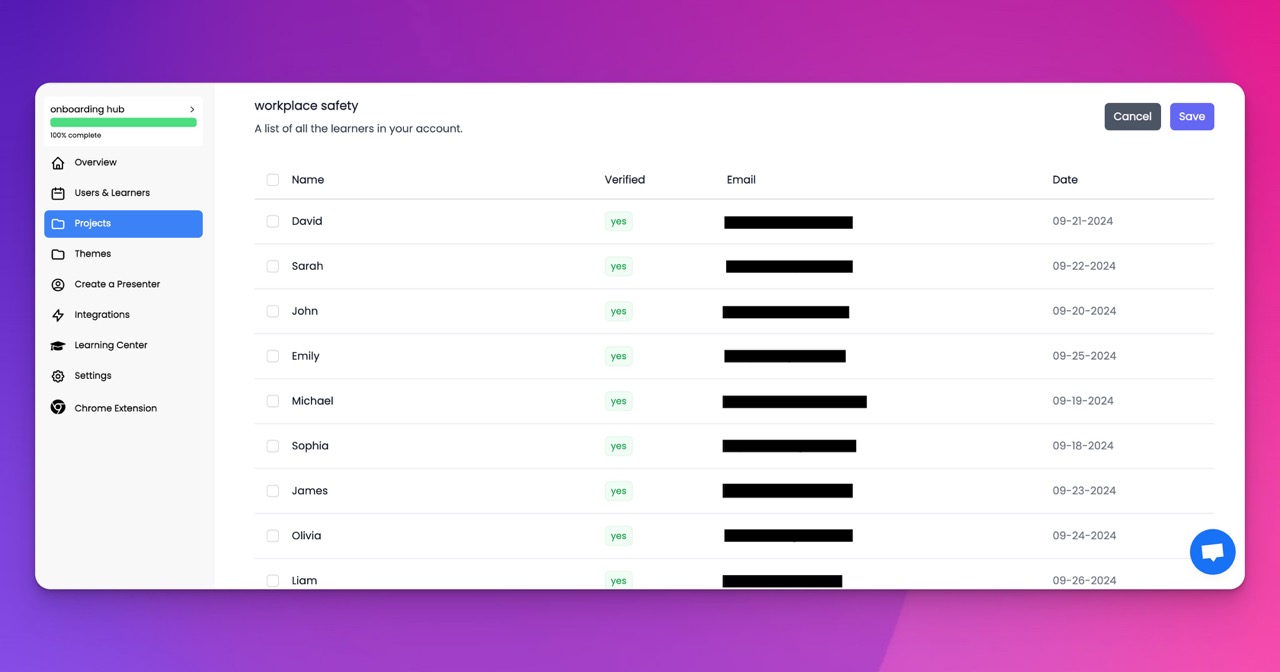🎉 Trainday now integrates with Zendesk and Hubspot 🎉 Trainday now integrates with Zendesk and Hubspot 🎉 Trainday now integrates with Zendesk and Hubspot
🎉 Trainday now integrates with Zendesk and Hubspot
🎉 Trainday now integrates with Zendesk and Hubspot
Contact
Airlines
Addressing Burnout to Prevent Turnover in the Airlines Field
Addressing Burnout to Prevent Turnover in the Airlines Field: Leveraging Data and Artificial Intelligence for Efficient Employee Training
The airline industry is notorious for its demanding and high-stress environment, which often leads to burnout among employees. Burnout not only affects the well-being and performance of individuals but also contributes to high turnover rates. To combat this issue, airlines can harness the power of data and artificial intelligence (AI) to develop relevant employee training courses efficiently and in a fast time frame. In this blog post, we will explore how these technologies can be leveraged to address burnout and prevent turnover in the airlines field.
1. Understanding Burnout in the Airlines Field:
Burnout is a state of emotional, mental, and physical exhaustion caused by excessive and prolonged stress. In the airlines field, employees face numerous stressors, including irregular working hours, jet lag, dealing with difficult passengers, and maintaining safety protocols. These factors can take a toll on their well-being, leading to burnout and ultimately driving them to leave their jobs.
2. The Role of Data in Identifying Burnout Triggers:
Data plays a crucial role in identifying burnout triggers within the airlines field. By analyzing employee data, such as absenteeism rates, performance metrics, and job satisfaction surveys, airlines can pinpoint the factors contributing to burnout. For instance, data might reveal that long-haul flights or specific shift patterns are particularly challenging for employees, leading to increased burnout rates. By identifying these triggers, airlines can take proactive measures to address them.
3. Leveraging AI for Relevant Employee Training:
Artificial intelligence can significantly expedite the process of creating relevant employee training courses. By analyzing vast amounts of data related to job roles, performance, and employee feedback, AI algorithms can identify patterns and develop personalized training modules. These modules can focus on areas that are most likely to cause burnout, such as stress management, self-care, effective communication, and conflict resolution. AI can also adapt training programs based on individual learning styles and preferences, ensuring maximum engagement and knowledge retention.
4. Fast Time Frame for Training Development:
Traditionally, creating training courses has been a time-consuming process involving manual research, content creation, and instructional design. However, with the use of AI, airlines can significantly reduce the time frame required for training development. AI algorithms can rapidly analyze relevant data and generate training modules, cutting down on the manual effort and allowing airlines to address burnout triggers promptly. This agility allows airlines to respond to emerging challenges and adapt training programs accordingly, ensuring employees receive the necessary support.
5. Continuous Learning and Improvement:
The beauty of leveraging data and AI in training development is that it enables airlines to gather real-time feedback and measure the effectiveness of the programs. By monitoring employee performance and well-being metrics, airlines can continuously fine-tune their training courses to better address burnout triggers. This iterative process ensures that the training remains relevant and impactful, ultimately reducing burnout rates and preventing turnover.
Conclusion:
Addressing burnout is crucial for retaining skilled employees in the airlines field. By utilizing data and artificial intelligence, airlines can create relevant employee training courses efficiently and in a fast time frame. This approach allows airlines to proactively address burnout triggers, provide personalized support to employees, and ultimately prevent turnover. Embracing these technologies not only benefits the well-being and satisfaction of employees but also enhances overall operational efficiency and customer experience in the airline industry.
Accelerate Compliance.
Deliver OSHA-Ready Courses Instantly.
Empower your team with data-driven training solutions tailored to your industry's safety standards. Stay compliant, reduce risks, and boost productivity with AI-powered course creation.
